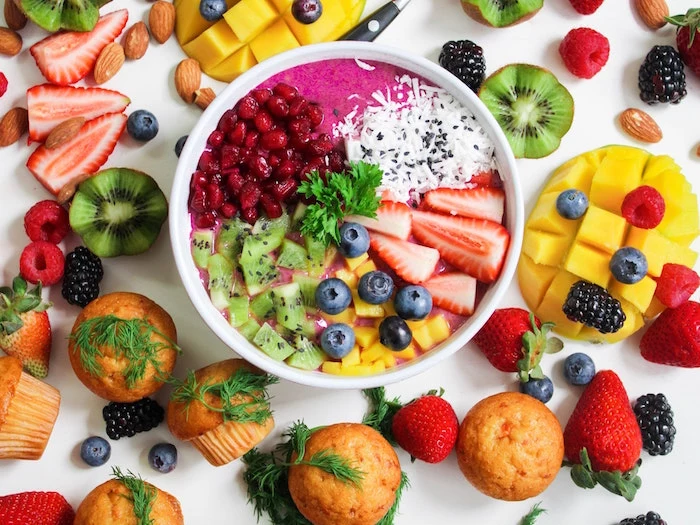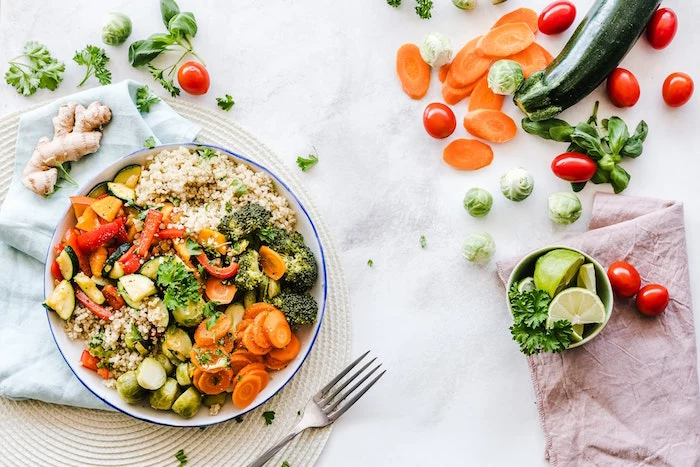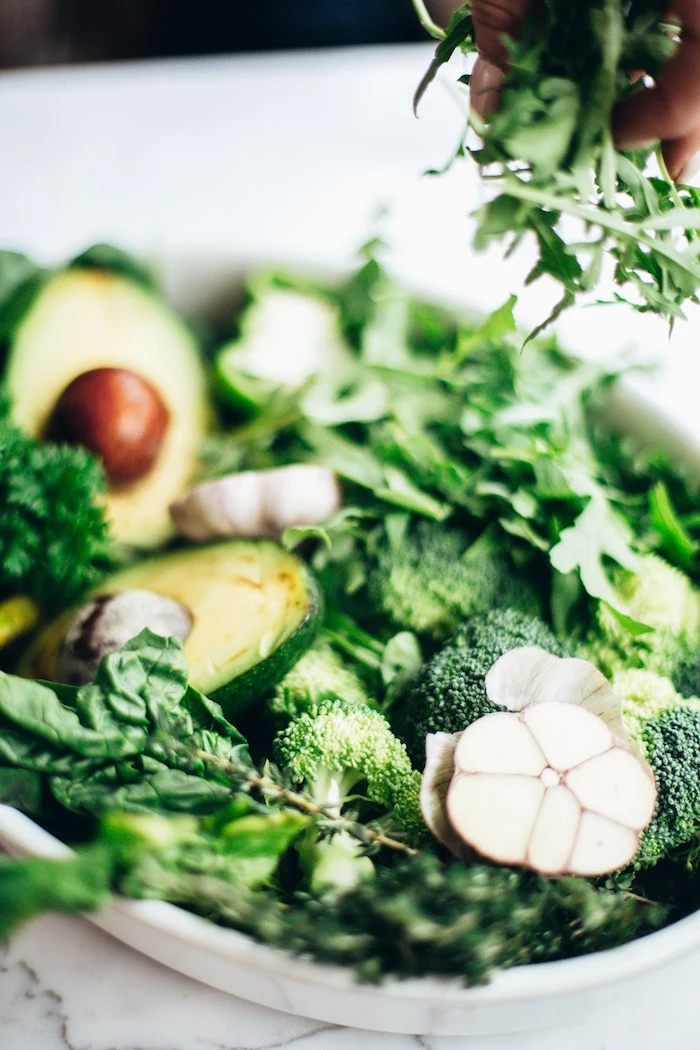Feeling Blah? How to Fight Back Against Inflammation With Your Fork
For years, I’ve had conversations with people who all share a similar story. They’re dealing with achy joints, a fog they can’t seem to shake, skin that just won’t cooperate, and a level of fatigue that coffee can’t fix. They’ve often seen doctors who run tests and find nothing specific, yet that nagging feeling that something is off just won’t go away. More often than not, the invisible thread tying these issues together is chronic, low-grade inflammation.
In this article
- First, What Exactly IS Inflammation?
- How Food Can Fuel the Fire (or Cool It Down)
- The Main Culprits: Foods That Fan the Flames
- Quick Pause: What About Drinks?
- Building Your Anti-Inflammatory Plate: The Fun Part!
- Okay, Where Do I Actually Start? A Simple Plan for Your First Week
- What This Looks Like: A Sample Anti-Inflammatory Day
- A Few Common Pitfalls to Avoid
- Inspirational Gallery
This isn’t the dramatic swelling you get from a sprained ankle. It’s a quiet, internal fire that can smolder for years, messing with your body’s natural balance. Honestly, tackling it isn’t about some miracle cure or a trendy, restrictive diet. It’s about understanding that the food you put on your plate can either be fuel for that fire or the very thing that helps put it out. My goal here is to give you the same practical, science-backed advice I share every day—to show you how to build a diet that actively works for you, not against you.

First, What Exactly IS Inflammation?
Before we dive into the groceries, let’s get this straight: inflammation isn’t the bad guy. In fact, it’s a critical part of your immune system. Think of it as your body’s elite emergency response team. You get a cut, and boom—inflammatory cells rush to the scene to fight off bacteria and kickstart the healing process. That redness and swelling? That’s acute inflammation, and it’s a short-term, lifesaving process.
The trouble begins when that alarm gets stuck in the ‘on’ position.
Chronic inflammation is that alarm quietly blaring in the background, day in and day out. This constant state of alert wears your body down, potentially damaging healthy tissues and organs over time. It’s the kind of underlying stress linked to many major health conditions. When we see consistently high levels of certain markers in the blood, like C-reactive protein (CRP), without an obvious infection, it’s a huge red flag that we need to look at lifestyle—especially diet.

How Food Can Fuel the Fire (or Cool It Down)
So, how does a cheeseburger translate to inflammation? It happens in a few key ways. A major player is your gut. The lining of your intestines is meant to be a strong barrier, letting good stuff (nutrients) in and keeping bad stuff (toxins, undigested food) out. But some foods, particularly the ultra-processed kind, can weaken this barrier. When unwanted particles slip through, the immune system freaks out and launches an inflammatory attack.
Then there’s oxidative stress, which is basically cellular rust. Our bodies naturally produce unstable molecules called free radicals, but a poor diet can create way too many. This is where antioxidants from plants come in—they are the rust-proofers. Finally, some foods, especially sugar, directly trigger the release of pro-inflammatory messengers. A sugary drink is like sending a text alert to your immune system to go on high alert.

The Main Culprits: Foods That Fan the Flames
While I’m a big believer in focusing on what to add to your diet, it’s crucial to know the main offenders. Limiting these is often the most impactful first step. We’re not talking about a one-off piece of birthday cake, but the stuff that forms the foundation of a typical modern diet.
1. Sugar and High-Fructose Corn Syrup
If you change only one thing, make it this. Our bodies simply aren’t built to handle the sheer volume of added sugar we consume today. To put it in perspective, health experts suggest a daily limit of about 25 grams of added sugar for women and 36 for men. A single 12-ounce can of soda can pack around 39 grams—more than a day’s worth right there! Reading labels is a must. Look for ‘Added Sugars’ and you’ll be shocked where it hides.
2. Industrial Seed and Vegetable Oils
This one confuses a lot of people. The issue is that many common oils (like soybean, corn, sunflower, and safflower) are overloaded with omega-6 fatty acids. We need some, but our diets are now so out of whack—think a 20:1 ratio of omega-6 to omega-3, when it should be closer to 4:1. This imbalance is a recipe for inflammation. Here’s a simple swap guide:

- For dressings and low-heat cooking: Ditch the generic vegetable oil and use Extra Virgin Olive Oil. A good bottle will run you $10-$15 and is worth every penny.
- For high-heat searing and roasting: Switch to Avocado Oil. It has a high smoke point and a neutral flavor.
- For baking or certain dishes: Coconut oil or even good old-fashioned butter can be better choices than highly processed shortenings.
3. Refined Carbohydrates
Carbs are not the enemy; refined carbs are. White flour, white bread, pastries, and many cereals have been stripped of their fiber. Without it, they hit your bloodstream like a shot of sugar, causing an inflammatory spike. A good visual: think of a whole oat as a complex, locked package your body has to work to open. White bread is like a pre-opened package that floods your system all at once.
4. Artificial Trans Fats
Thankfully, these are mostly gone from the food supply, but it’s still smart to be vigilant. Artificial trans fats were created to make liquid oils solid and extend shelf life. They are intensely inflammatory. Always check ingredient lists for the words “partially hydrogenated oil.” If you see that, put the item back. No questions asked.

5. Processed Meats and Excessive Red Meat
This is all about quality and quantity. Processed meats like hot dogs, bacon, and deli meats are a definite concern due to preservatives and other additives. With unprocessed red meat, the key is moderation. High-heat cooking like char-grilling can also create inflammatory compounds. My advice? Treat red meat as a special occasion food, not a daily staple. When you do buy it, opt for grass-fed if your budget allows, as it has a better fat profile.
Quick Pause: What About Drinks?
Oh yeah, what you sip matters, too!
- Coffee & Tea: Good news! Both coffee and especially green tea are loaded with antioxidants and have anti-inflammatory properties. The catch? It’s what you add that causes problems. A coffee loaded with sugar and flavored syrups is no longer a healthy drink.
- Alcohol: To be frank, alcohol is generally inflammatory. If you choose to drink, red wine in moderation might be a slightly better choice due to its polyphenol content, but limiting overall alcohol intake is a solid move for cooling inflammation.

Building Your Anti-Inflammatory Plate: The Fun Part!
Now, let’s talk about all the delicious food you get to eat. This isn’t a diet; it’s a vibrant, satisfying way of life. The focus is on whole foods packed with the nutrients your body is craving.
The Foundation: A Rainbow of Plants
This is rule number one. Aim to have two or three different colors on your plate at every meal. Each color signals different protective compounds.
- Leafy Greens (spinach, kale) are full of vitamin K.
- Berries (blueberries, strawberries) are packed with powerful antioxidants. A pro tip: buy them frozen! They are just as nutritious, cheaper (a big bag might be $8-$10), and won’t spoil.
- Cruciferous Veggies (broccoli, cauliflower) contain a special compound that helps your body’s natural detox processes.
Embrace Healthy Fats (Especially Omega-3s)
The right fats are your friend! The superstars are omega-3s.
- Fatty Fish: Think SMASH: Salmon, Mackerel, Anchovies, Sardines, and Herring. Aim for two servings a week. And don’t sleep on canned options! A can of wild salmon or sardines costs just a few dollars and is an nutritional powerhouse.
- Plant Sources: Walnuts, chia seeds, and flaxseeds are great. A quick tip: you have to grind flaxseeds, otherwise they’ll pass right through you without giving up their goods. I add a tablespoon of ground flax to my oatmeal every morning.
- Olive Oil: Extra virgin olive oil contains a compound called oleocanthal, which actually works on a similar pathway to ibuprofen.
Harness the Power of Spices
This is the easiest upgrade you can make. Your spice rack is a treasure chest of anti-inflammatory compounds.
Quick Win You Can Do Right Now: Find your turmeric and black pepper. Vow to add a sprinkle of both to your eggs, soup, or roasted veggies tomorrow. The piperine in black pepper boosts the absorption of curcumin (the active compound in turmeric) by a staggering amount. You’ve just taken your first step!
Choose Whole Grains and Legumes
Fiber is the unsung hero. It feeds the good bacteria in your gut, which in turn produce compounds that calm inflammation throughout your body. Lentils, chickpeas, black beans, quinoa, and oats are your best friends here.
Okay, Where Do I Actually Start? A Simple Plan for Your First Week
Feeling overwhelmed? That’s totally normal. Don’t try to change everything at once. Here’s a simple, doable plan:
- Focus on Breakfast: For one week, just change your breakfast. Swap the cereal or pastry for oatmeal with berries and walnuts, or a couple of eggs with sautéed spinach.
- Make One Smart Swap: Pick one thing to trade up. Switch your cooking oil from corn or vegetable oil to avocado or olive oil. That’s it.
- Drink More Water: Aim to replace at least one sugary drink or juice per day with a glass of water, maybe with a squeeze of lemon.
I once worked with someone who just made that first change—swapping their sugary cereal for oatmeal. Within a month, they told me their mid-morning brain fog had lifted for the first time in years. Small steps create big momentum.
What This Looks Like: A Sample Anti-Inflammatory Day
Need a visual? Here’s what a delicious, inflammation-fighting day could look like:
- Breakfast: A bowl of oatmeal made with water or unsweetened milk, topped with a cup of frozen berries, a tablespoon of chia seeds, and a sprinkle of cinnamon.
- Lunch: A large salad with mixed greens, grilled chicken or a can of chickpeas, cucumber, tomatoes, bell peppers, and a simple dressing of olive oil, lemon juice, and a pinch of salt.
- Dinner: A baked salmon fillet (seasoned with garlic, dill, and black pepper) served with a side of quinoa and roasted broccoli.
- Snack: A handful of almonds and an apple, or a small bowl of plain Greek yogurt with some walnuts.
A Few Common Pitfalls to Avoid
As you get started, keep an eye out for these common traps:
- The
Inspirational Gallery
The Hidden Player: It’s not just about what you add, but also what you subtract. Many processed foods, from salad dressings to crackers, are made with refined vegetable oils like soybean, corn, or safflower oil. These are high in omega-6 fatty acids which, when out of balance with omega-3s, can promote inflammation. A simple switch to extra virgin olive oil for cooking and dressings can make a significant difference.
- Swap sugary cereals for oatmeal with berries and walnuts.
- Replace croutons on your salad with toasted chickpeas.
- Switch from white rice to quinoa or brown rice.
- Trade a creamy dip for a vibrant, homemade hummus.
The antioxidant compound in extra virgin olive oil, oleocanthal, has been shown to have anti-inflammatory effects similar to a low dose of ibuprofen.
What about spices? Are they really that powerful?
Absolutely. Think of your spice rack as your anti-inflammatory medicine cabinet. Turmeric is the star, thanks to its active compound, curcumin. Always pair it with a pinch of black pepper—the piperine in pepper can increase curcumin’s bioavailability by up to 2,000%! Ginger and cinnamon are also potent inflammation fighters. Don’t be shy; add them generously to soups, smoothies, and roasted vegetables.
You don’t need an expensive ‘superfood’ budget to eat this way. Some of the most powerful anti-inflammatory foods are also the most affordable:
- Lentils: Packed with fiber and magnesium, they help regulate blood sugar and inflammation.
- Frozen Blueberries: Just as potent as fresh, they’re loaded with antioxidants called anthocyanins.
- Canned Sardines: A powerhouse of marine omega-3s (EPA and DHA) for just a couple of dollars a can.
Fatty Fish: Your best source of the potent omega-3s, EPA and DHA. Aim for two servings a week of salmon, mackerel, herring, or sardines.
Leafy Greens: Spinach, kale, and collards are rich in Vitamin K and antioxidants that protect cells from inflammatory damage.
For a powerful combination, try a salad of baby spinach topped with a piece of grilled salmon.
- Less joint pain and morning stiffness.
- Clearer thinking and reduced ‘brain fog’.
- A more balanced mood and energy level throughout the day.
The secret? These are the real-world benefits people often report after consistently shifting their diet to include more whole, anti-inflammatory foods and fewer processed ones.
Just one cup of dark leafy greens like kale provides over 100% of the daily recommended value for Vitamin K, a key nutrient in regulating inflammatory responses.
This means that something as simple as adding a large handful of greens to your daily smoothie or soup isn’t just ‘healthy’ in a vague sense—it’s providing your body with the specific tools it needs to turn down the dial on chronic inflammation and protect your cells from stress.
A common pitfall: Swapping to ‘gluten-free’ products without reading the labels. Many gluten-free breads and snacks are made with highly refined starches (like potato or tapioca starch) and added sugars to improve taste and texture, which can be just as inflammatory as their gluten-containing counterparts. Focus on naturally gluten-free whole foods instead.










